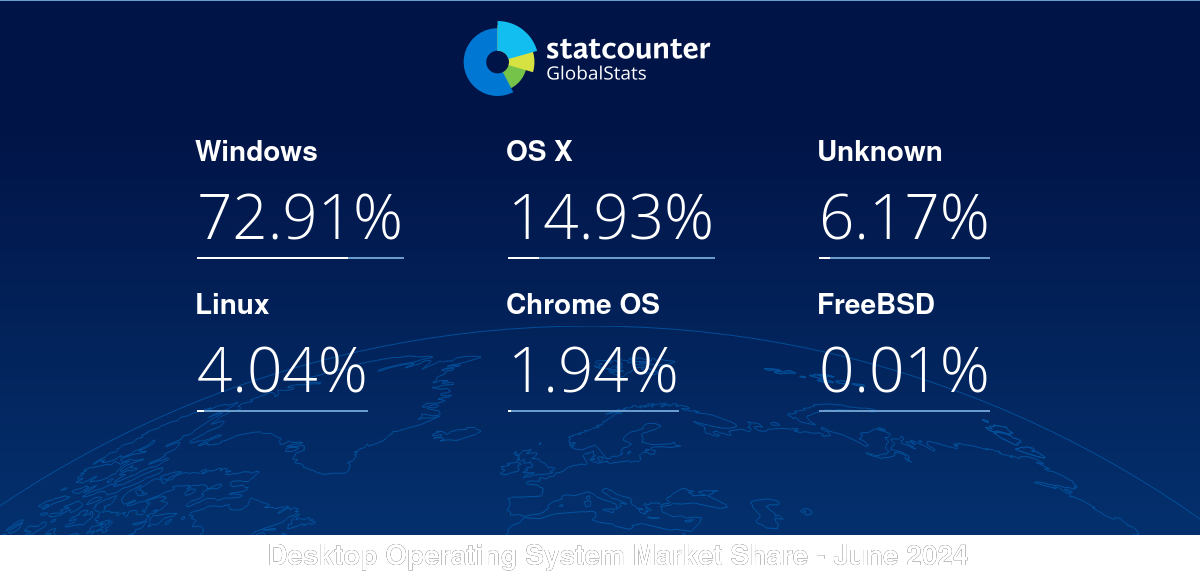It peaked at 4.05% in March. The last 2 months it went just below 4% as the Unknown category increased. For June the reverse happened, so 4.04% seems to be the real current share of Linux on Desktop as desktop clients were read properly/werent spoofed.



The thing is that most Windows users don’t care and will continue to use it. People like you and I know about the benefits of Linux, but sometimes we overestimate how much regular users care about the OS they’re using.
If anything, they’re moving in the opposite direction. Windows Server 2025 is going to support hotpatching, which means that system updates can be applied without needing to reboot. Not sure if the technology will come to consumer Windows though.
How long do you expect legacy hardware to be supported for?
I dunno, longer than 6 years, which is about how long it took for Skylake to go from brand new to not being supported by the new version of Windows?
And I honestly can’t think of a time that’s even happened before when you could get 10 running on 10+ year old processors as long as they were powerful enough. And the difference between a Core 2 Duo and a Skylake i7 is vastly more than between the Skylake i7 and the current generation.
The issue is not that the hardware stops getting support, either… It’s that the hardware is expressly and needlessly being blocked long before it’s no longer useful. My old Skylake is now 9 years old and more than capable of running as a moderate power machine on current workloads, other than being forcibly blocked to encourage me to put it in a landfill so I can continue the consumer march for more stuff to feed the corpos.
It’s wasteful. And for the most part, all that’s needed is for the old drivers to be allowed to function. And to make things like TPM 2 be optional, especially considering I don’t think you’re even required to actually use it for Windows 11, just have it.
Interesting… I didn’t realise Skylake isn’t supported. I agree with your comment. I thought people were talking about much older equipment.
TPM 2 has been around since 2015ish and I wouldn’t be surprised if Windows starts relying on it more heavily. A lot of businesses have already required employees to use computers with TPM 2.0 for a long time, and enterprise use is a big focus for Microsoft.
I have some Sandy Bridge systems here running strong as Linux desktops for light work. You know, these 4-core 3,3GHz processors from - hmm - 2014?